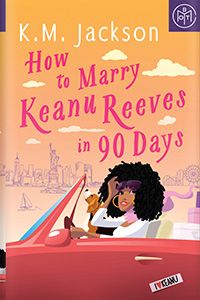The long answer: throughout its history, Book of the Month has been a book club, a subscription service, and a cultural phenomenon. It launched in 1926, the brainchild of Harry Scherman, Max Sackheim, and Robert Haas. Based in Camp Hill, Cumberland County, Book of the Month Club identified a market for a mail order book distribution service. It became an incredible success in a relatively short time: its initial 4,000 subscriber list expanded to 60,058 by 1927. This was by and large due to its two main tenets: But what about Book of the Month’s current iteration? Does it make any difference to sales? Well, that can be a little hard to identify. Because Book of the Month gets permission to print their own large run of copies of each monthly selection, that’s a number of copies that might not be printed otherwise. Even when a title doesn’t sell enough books during its month as a selection, it remains available for order add-ons. As Blake Orlandi, the company’s chief operating officer, says: “We eventually sell through the extra books.” But that doesn’t necessarily mean that these are copies that wouldn’t be sold without Book of the Month’s influence. In order to find the answer, I reached out to authors, editors, and agents. I was particularly interested to hear from bestselling author Amor Towles’s agent, Dorian Karchmar at WME, as two of his three published novels have been Book of the Month picks. As it turns out, it’s not as straightforward as it may seem. As Karchmar told me, She did make a case for Book of the Month making a real difference in other cases: “I have absolutely seen the impact of a BOTM selection when it comes to authors and novels that are on the brink of breaking out to the next level, and have benefitted significantly from BOTM’s curation and skilled deployment of Instagram.” Even when exact sales numbers aren’t available, partly because of the reasons mentioned above and partly because others told me it was company policy not to reveal figures, there are factors to consider: social media engagement is a considerable one. Kylie Lee Baker, whose debut novel The Keeper of Night was a selection last November, told me that she doesn’t have actual book sales numbers because she hasn’t received her first royalty statement yet. But she “definitely saw a significant increase of people tagging me on Instagram with BOTM copies in November.” The site also features over 6,000 reviews of her book, indicating that, not only was her novel chosen by a great number of subscribers, but it generated enough interest for those subscribers to log back in and take the trouble to leave a review. It also seems that the impact varies depending on the author’s previous success: debut or relatively new authors will notice a much bigger difference than established or repeat authors. Nevertheless, book marketing is rarely determined by a single factor. Karchmar made an intriguing point: she says that she sees “BOTM as a coveted curator and amplifier of quality fiction. While it might not be enough to “make” a book entirely on its own, or to be credited as the definitive spark leading to explosive marketplace growth for a novel, it can be a very potent source of discovery and word-of-mouth recommendations leading to significant career growth for a writer.” All in all, I believe that the balance is tipping to the yes side of the scale. Have you tried Book Riot’s own subscription book service? TBR pairs you with a professional book nerd who creates your own tailored book recommendations according to exactly what you’re looking for, and you can choose from the Hardcover plan or the Recommendations Only plan!

